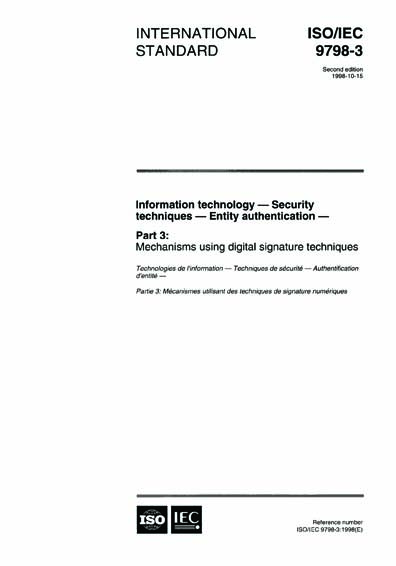Historical
ISO/IEC 9798-3:1998
Information technology - Security techniques - Entity authentication - Part 3: Mechanisms using digital signature techniques
This part of ISO/IEC 9798 specifies entity authentication mechanisms using digital signatures based on asymmetric techniques. Two mechanisms are concerned with the authentication of a single entity (unilateral authentication), while the remaining are mechanisms for mutual authentication of two entities. A digital signature is used to verify the identity of an entity. A trusted third party may be involved.
The mechanisms specified in this part of ISO/IEC 9798 use time variant parameters such as time stamps, sequence numbers, or random numbers, to prevent valid authentication information from being accepted at a later time.
If a time stamp or a sequence number is used, one pass is needed for unilateral authentication, while two passes are needed to achieve mutual authentication. If a challenge and response method employing random numbers is used, two passes are needed for unilateral authentication, while three or four passes (depending on the mechanism employed) are required to achieve mutual authentication.
Content Provider
International Organization for Standardization [iso]






